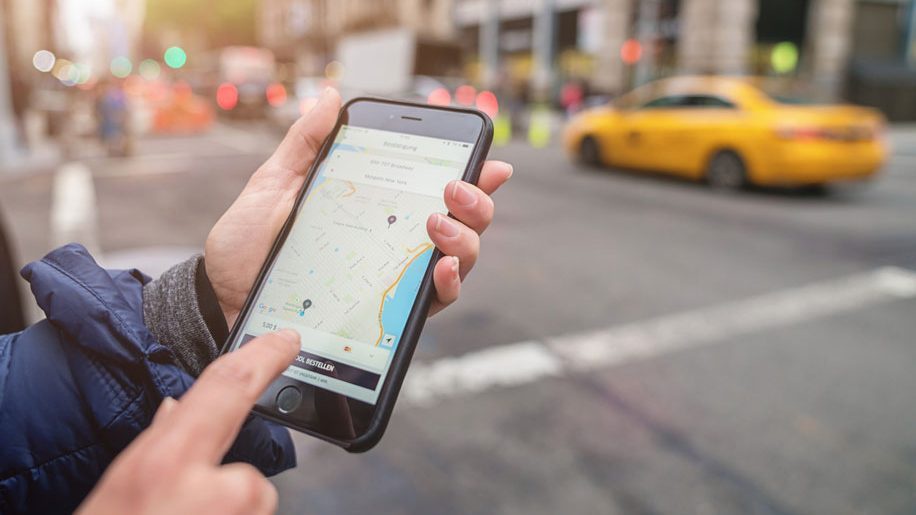Uber, which was ranked as the second-most disruptive company in the world in 2018, was able to establish its name and supremacy early on. The idea of ride-sharing has gained popularity ever since there have been an unprecedented number of vehicles on the roads, fewer parking spots, and rising pollution.
Individuals who once shuddered at the thought of riding in a car with strangers can now do it without worry. The practice of sharing a vehicle and disembarking at various locations has now become standard.
When it comes to online services, consumers who seek rapid satisfaction have found considerable ease in ridesharing. With just a few taps on their phone, users of Uber can reserve a private or shared car to pick them up from their selected destination.
People now trust the ride-sharing system because it places a high focus on the security and safety of users and their personal information. The market for ride sharing has been increasing as more businesses enter the fray.
How profitable is the market for ridesharing services?
The market is anticipated to reach $218 billion by 2025, expanding at a CAGR of 19.87%. (2018-2025). The profitability of the ride-sharing sector is driven by the rising demand for personal mobility and the falling car ownership rate. Increasing smartphone and internet penetration, as well as CO2 reduction goals, also contribute to the development of the ride-sharing sector.
Since the success of the ride-sharing company, more companies are entering the taxi and cab industry. Hiring the top Taxi app development firm allows you to create your own taxi app.
About Uber
Travis Kalanick and Garrett Camp established Uber in 2009, and it took off right away. It is one of the top ridesharing applications in the world and offers the general public with significant convenience. Due to its services, Uber, the industry leader in ridesharing, continues to stay at the top.
Uber started peer-to-peer transportation with UberPop and ridesharing with UberPool after seizing the appropriate chances at the right moment and recognizing the requirements of its passengers. Uber provides a range of trips, including Uber Black, Uber SUV, Uber X, and UberChopper, in order to cater to the needs of its diverse user base. In order to improve their services, the business with the futuristic vision is currently sponsoring research on driverless vehicles.
How expensive is Uber?
Uber has developed significantly since 2009, when it was able to maintain its position as the leading ride-sharing firm. Uber has created a robust market presence in over 700 cities and 65 countries worldwide. In 2019, Uber generated $14.15 billion in revenue.
Uber is the most popular ride sharing app, with 75 billion passengers and 3.9 million full-time drivers.
Here are a few figures that demonstrate Uber's profitability:
- Around 14 million Uber journeys are done daily.
- 70% of the ride-sharing business in the United States is dominated by Uber.
- Uber maintains a 25 percent share of the American delivery business.
- Uber's autonomous driving division is valued at over $7 billion.
- Approximately 10 billion trips have been taken globally.
- The average monthly income of an Uber driver is $364.
- Uber's pre-IPO investment level is currently $24.7 billion.
- In 2018, Uber was estimated to be worth $72 billion.
What kind of business model does a ride-sharing company like Uber use?
Uber's business model includes a driver, a passenger, and payment, just like most ride-sharing businesses. Here are some details about how Uber makes money:
The passenger: People get the Uber app on their phones and sign up for it. They can book a ride through the app, keep track of it, and pay for it when it's over.
The driver: Anyone with a valid driver's license can get an Uber driver app and sign up to be a driver. The driver is checked out by the system and added to it. The driver can then use his or her car to give Uber riders rides.
Payments and fares: Uber charges a base fare and a price per kilometer. During rush hours, the prices change as well. In some countries, like India, the passengers can pay with cash, a card, or by having money taken directly from their bank account.
What is Uber's revenue model?
The revenue models employed by the majority of ridesharing companies are comparable. Companies generate revenue through a combination of multiple revenue streams. Uber's most effective income model combines commissions from drivers, advertisements, and affiliate marketing.
Uber charges drivers 20% of the fare as a commission fee.
In addition, the firm hikes fares by 1.5 to 3 times during peak and high-demand hours.
Uber also charges cancellation fees to its passengers.
Finally, Uber charges linked businesses for marketing and advertising on its app.
Final Impressions
In addition to achieving profitability through the ride-sharing industry, Uber has expanded its services to multiple business verticals. These divisions include UberEats for food delivery, UberRush for courier delivery, UberPets for pet transportation, UberKids for children who require a child safety seat, UberMoto for motorcycle transportation, and others.
Diversification has enabled Uber to generate more income and earn the trust of millions of customers.
Hence, the profitability of a ride-sharing firm such as Uber is enormous if the organization seizes the correct opportunities, provides clients with distinctive offerings, and invests in diversification. In the future, the ride-sharing sector will continue to expand, presenting enormous opportunities for new entrants while the rivalry intensifies.


No comments yet